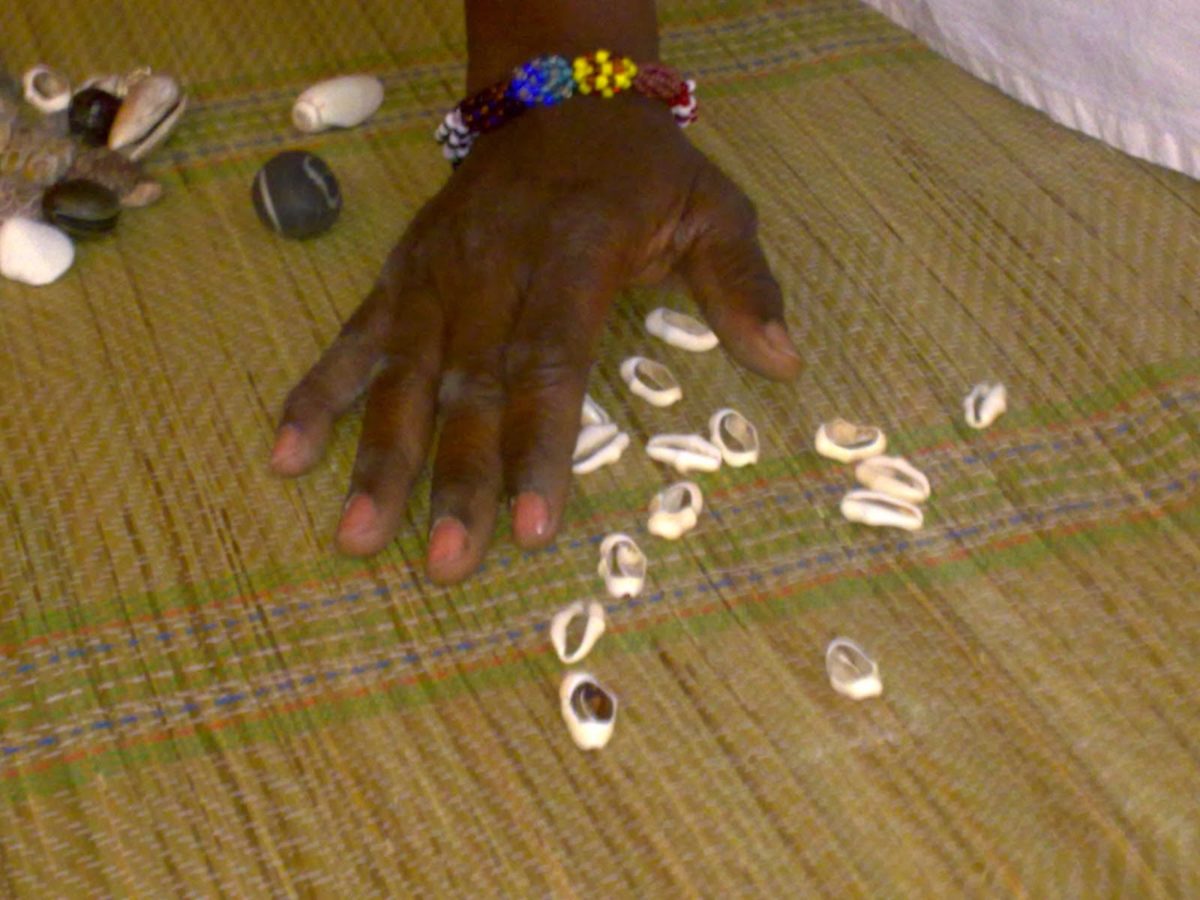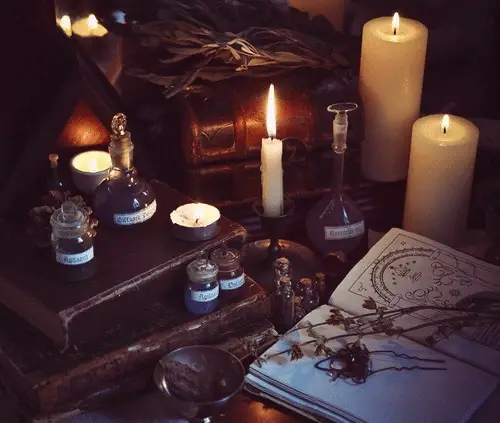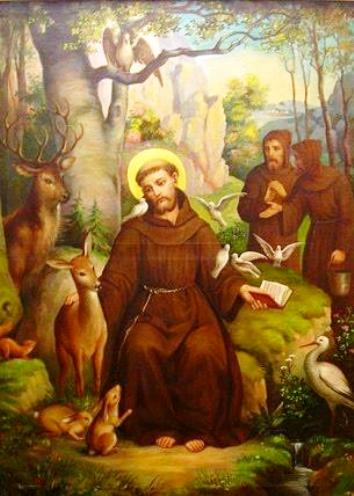Mysticism has always been a part of people, who are often curious about what the future holds for them. For many, destiny is written, the dice have already been rolled and they want to know what will happen in their lives. Today we will learn a little about the Caracoles in Santeria (see also: Santeria and Spiritism).

How do you read the caracoles in Santeria?
In our world there is a great diversity of religions, and although many are very similar, there are others that are not so similar. These religions have a system of deities that they worship and pay tribute to in order to obtain forgiveness, eternal life or whatever else the gods offer.
There are religions where belief in multiple gods is common; these religions are polytheistic, meaning they believe in the existence of many gods, not just one. On the other hand, monotheistic religions are those in which believers accept the existence of only one God. The gods are supernatural beings far above human beings, spiritual beings who watch over the safety and well-being of human beings, although there are other beings whose motivation is the destruction of the human race and that the human race is lost for all eternity.
The opposite and the negative have always existed, at least within the religious systems, the case is that spiritually there is a war that seems endless, where the goal is to save the souls of people, while the evil beings want to cause them to be lost forever. Within the religion of the Yaruba or Santera, there is a polytheistic belief, meaning that they believe in the existence of multiple gods, and they also believe that there is a latent evil in the universe that seeks the destruction of people and their souls.
It is not new to think that every religion claims to be able to communicate with its gods or its god through an object or other means. Prayer is usually used to communicate with Jehovah, the Christian God, although this has not always been the case; previously only the most sacred beings in his eyes communicated with him.
The Yaruba also believe that they can communicate with beings that inhabit the spiritual plane, that they can call them and make them come to this side of the living, to the realm of the living. To do this, they use various objects as instruments of invocation.

On television we see them using a crystal ball a lot, at least witches use them a lot, so that is one of the most famous objects used to make contact with one of the beings that inhabit the spiritual plane, whether it be a god or an ordinary spiritual being.
Another instrument used for this purpose is the Ouija board, yes, that cursed board that half the world is afraid of, but apart from horror films where it is said to be used to summon evil spirits, the Ouija board is an instrument used to make contact with beings from the other world.
Among the Santeros, the most famous and widely used instrument for contacting the dead is the caracole. Through the caraoles, the santeros contact the saint or spirit in question to present the client’s request for an answer.
In the case of spirit invocations, the invoker may ask questions about the client’s behaviour, the client’s health, the evils to come, an in-depth study of the client’s personality, and even information about the uncertain future of the person in question and how he can influence the person’s future in a positive way through spiritual work.
How do you throw snails?
Many of the world’s religions have the art of divination in their spiritual repertoire. There are many people who believe that destiny is written, that everything is set and that no one can change the order of things. With a written destiny, many believe that life would be meaningless, even less so if people knew what might happen in the future, and these people are in many cases afraid to know the future of things, their future, what will happen to them in the future.
On the other hand, there are people who do not believe that destiny is written and that everything can happen by chance, or that we force many events to happen, some of which can change our lives forever, and others that can destroy them. The thing is, in the Yaruba religion there is an art of divination that consists of reading the shells of the snails and the position in which they remain on the table after being thrown; the santero analyses all the information and the formation of the snails reveals important facts about the life of the person consulted and his or her future.
As well as delving into the past and seeing the future, what really happens behind the scenes is that the santero talks to his deities in each casting and they give answers to the questions of the person who calls them. The caracoles are widely used by the Yaruba as a means of fortune-telling, although if we take into account the fact that it is really the deities who speak to the santeros through the caracoles, then it would not be fortune-telling, otherwise it would be divination.
When a person goes to a santero to have his or her caracoles read, the santero must make some preparations beforehand, such as arranging the table, the caracoles, and so on. When everything is ready, the santero starts throwing the shells, a total of 16 shells are used. Before throwing, the santero prays to all the orishas (deities), asking them to help him clarify the doubts of the person to be consulted.
During each throw, the santero talks to the deities and asks them questions about the person being consulted. It is believed that the Orishas influence the way the snails are watered throughout the month, giving answers to all the questions asked by the santero. (See also: Santeria Saints).
Reading
Reading the caracoles is not so easy, everyone will say that reading the caracoles is a piece of cake, that it’s something for fools, but actually reading the caracoles requires a deep knowledge of African mythology, because let’s not forget that Santeria comes from the Yaruba, a religion that comes from West Africa.

If the santero does not have sufficient knowledge of African mythology, it will be difficult for him to communicate with the deities necessary to solve the problems presented by the person consulted. The shells are one of the basic weapons of the santero, because through the shells he can consult the African gods, the Oshas, and ask them questions that will help him to clarify the doubts of his client or light the way for him to find a solution to his problems.
On the other hand, when the santeros consult the deities through the snails, they can see the past of the person and also his future, although in reality they cannot see it, because it is the invoked deity that has the knowledge about the future of the person, then the santero consults the deity about it and the same one gives the answer.
The santero must also have a deep knowledge of the stories and histories of the Yaruba deities, the more I know about them the more efficient I will be when I want to help a person who asks for it, because by knowing the stories and histories of the deities the santero can establish a relationship between the problem presented by the client and one of the stories of their deities.
After identifying the problem and relating it to the story, the santero can proceed to establish a relationship between the client’s problem and the problem that the deity once had and, above all, how he solved it. By using his mental agility, the santero can present the solution to his client’s problem in a much simpler and more efficient way. In addition, as mentioned above, the deities can speak through the snails about the past and future of the person consulted (see also: Santeria in Colombia).
The shells are bought virgin (closed) and the godparents open them by removing a small piece from the bottom. It is important to mention that a mano de caracoles consists of 18 caracoles, although 16 of them are thrown away. Of those that are thrown away, the ones that are taken out are called “Adelé”, and Elegguá’s hand has 21 snails, it is the one that has the most snails; at the time of throwing them away, only 5 of them are taken out. The snails belong to Elegguá (Baké Elegguá), who has the most snails. The snails to be thrown are called Diloggún, they come from Merídiloggún and have 16 snails.




